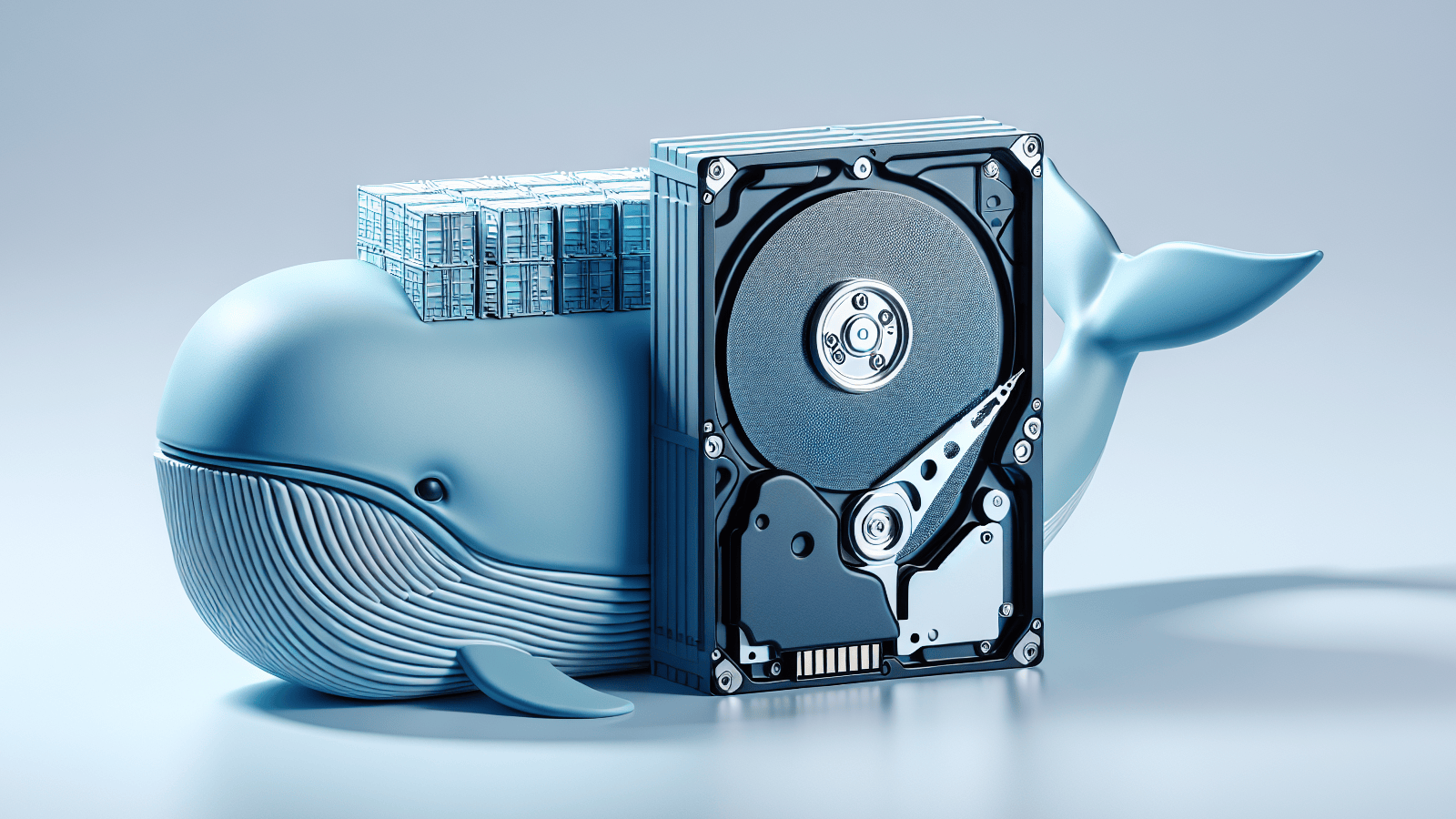
Connecting external drive as Docker volume
Quick tip on connecting an external drive as Docker volume.
Melvin Voetberg
Docker containers isolate workloads from the host, but sometimes you want to keep data on an external disk. In this quick tip, you’ll learn how to:
- Identify your external drive
- Create a Docker volume that points directly at the block device
- Bind‑mount it into a container at runtime
- Define it as a named volume in Docker Compose
1. Identify your external drive
Use lsblk or blkid to find the device path and UUID of your drive:
lsblk -f
# or
blkid
Look for your external disk (for example /dev/sdb1). And note its UUID (be874c01-de77-4084-847e-c874bf1b71e8 in this example).
2. Create a Docker volume from the block device
Create a Docker volume that binds directly to the device:
docker volume create hdd \
--driver local \
--opt type=ext4 \
--opt device=/dev/disk/by-uuid/be874c01-de77-4084-847e-c874bf1b71e8 \
--opt o=bind
hddis the name of your volume.type=ext4should match your filesystem (e.g.ntfsorxfs).devicepoints at the block device or its UUID symlink.o=bindtells Docker to mount it read/write.
Verify it:
docker volume inspect hdd
3. Bind‑mount at runtime
Use the volume with -v when running a container:
docker run -d \
--name app \
-v hdd:/app/data \
image:latest
This mounts the external drive’s filesystem at /app/data inside the container.
4. Define in Docker Compose
For repeatable setups, add the volume to your docker-compose.yml:
services:
app:
image: image:latest
volumes:
- hdd:/app/data
volumes:
hdd:
external:true
# Or define it directly (skip step 2)
volumes:
hdd:
driver: local
driver_opts:
type: ext4
device: /dev/disk/by-uuid/be874c01-de77-4084-847e-c874bf1b71e8
o: bind
Start it with:
docker-compose up -d
With these steps, Docker will treat your external drive as a normal volume, and data sits right on the disk.